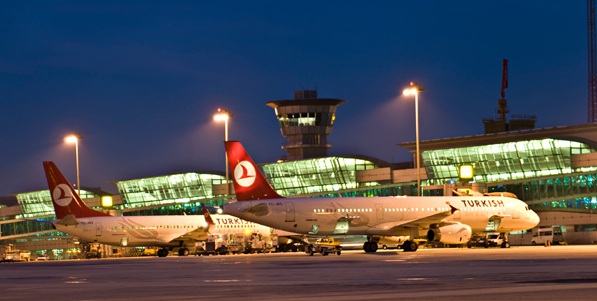

The final part of the article will revisit the concept of right to the city, underlining the urgent need to have an ecological glance in the urban studies to fully understand the impact of urbanization in the twenty-first century. Here in this part, Northern Forests of Istanbul and mega projects will get special attention to discuss the relation between urbanization and ecological destruction. The second part of the article will concentrate on the how mechanisms of implosion and explosion work for Istanbul.

Using the terminology of Lefebvre, concepts of “implosion” and “explosion” will also be discussed to shed a light on extended urbanization of Istanbul. Then the article turns its attention to literature of urban studies to show how non-urban space has been neglected. The first part of the article will lay theoretical foundations by concentrating on Lefebvre’s formulations on space. Istanbul, transformation of the city and impact of this transformation will get special emphasis. Thus, article will underline the importance of the interaction between urban and non-urban areas in the discussion of “right to the city”. Urban transformation, mega projects and their effects on urban space under the epoch of neoliberal practices have been on the agenda of social sciences for some time nonetheless a holistic approach which comprises both urban space and non-urban space, and relation between the two is still missing in many pieces of urban studies. The purpose of this article is to explore the significance of the interaction between urban space and non-urban space.

Underlining once more, if environment has no boundaries and if climate change and global warming are planetary issues, then those projects which have the potential of creating fatal effects on the environment need to be scrutinized by the international community and should not be left solely to the responsibility of the relevant states. If finished these insane projects ,with their multiplier effects, will not only sweep Istanbul from the map but by inducing an irreversible destruction on ecological systems in the area, mainly through deforestation and depletion of water resources-the two major issues discussed in Paris Conference-will inevitably contribute to climate change and global warming. These 3 projects comprise a package each one interdependent on the other while the main objective of this package is to open the hitherto pristine lands of Istanbul to global capital for other construction and infrastructure projects, plundering the lungs of the city. Against this framework, the 3 mega projects, populary labeled as ''Crazy Projects'' (namely the 3rd Bridge, the 3rd Airport and the Canal) targetting the Northern Forests of Istanbul need to be analyzed in depth and brought to the attention of the international communty and international human rights mechanisms because of their devastating impacts on the environment, nature, humans and all living beings. Hence, the degradation of the environenment or its destruction in one part of the planet, is not confined to its locality but has repercussions globally, impacting the existence of human beings all over the planet. John Knox, the United Nations Special Rapporteur on human rights and the environment has concisely pronounced, ''envi-ronment has no boundaries'' and this seems to be the major challenge of the age of the anthropoge-ne when global warming and climate change have reached such levels that the very existence of the anthropo, the human, is under threat. Introductıon Countries do have boundaries but '' the environment does not''! As, Prof.


 0 kommentar(er)
0 kommentar(er)
